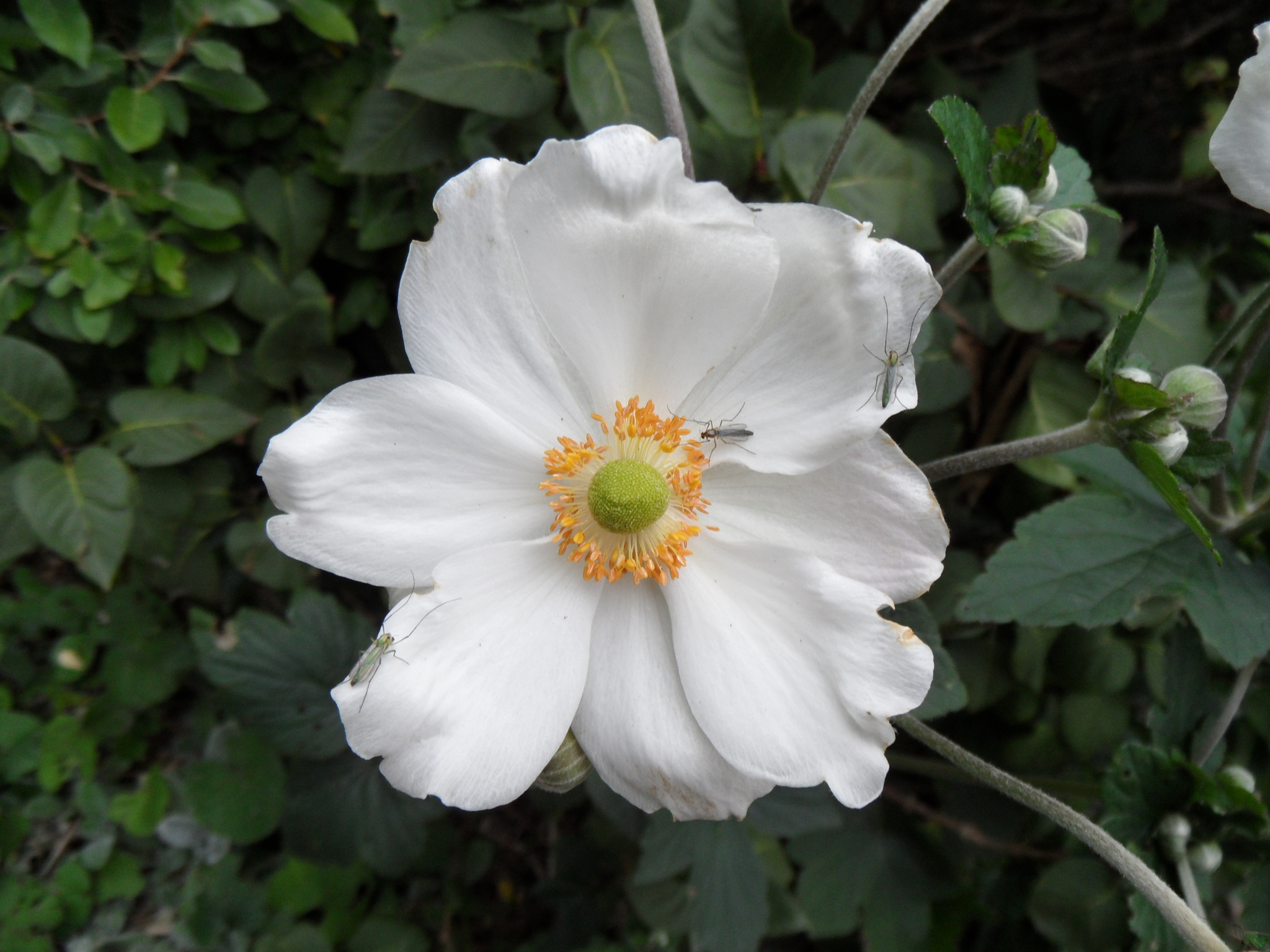
Perennial with woody rootstock. Leaves with 3 strongly toothed leaflets. Stems branched and with clusters of flowers in late summer. (a. vitifolia dc. × a. hupehensis hort. Lem. var. japonica (Thunb.) Bowles &Stearn)
Garden origin
This plant is generally and incorrectly known as the Japanese Anemone, A. japonica whose correct botanical name is A. hupehensis var. japonica, a plant that has 20 or more perianth segments. Anemone ×hybrida has 6-11 perianth parts and may reach heights of over 1 m while A. japonica is generally smaller, mostly less than 1 m tall and with sterile pollen. The rarely cultivated A. hupehensis has 5-6 more or less round petals unlike the more numerous and narrower petals of its close relatives. Double-flowered white forms are occasionally offered. The Asian A. vitifolia has leaves that are entire and lobed but never divided into 3 leaflets.
Source: (1997). Ranunculaceae. In: . Horticultural Flora of South-eastern Australia. Volume 2. Flowering plants. Dicotyledons. Part 1. The identification of garden and cultivated plants. University of New South Wales Press.

Anemone ×hybrida 'Honorine Jobert'
Flowers pure white. Originated 1858.
Anemone ×hybrida 'Prinz Heinrich'
Flowers deep pink. Originated 1902.